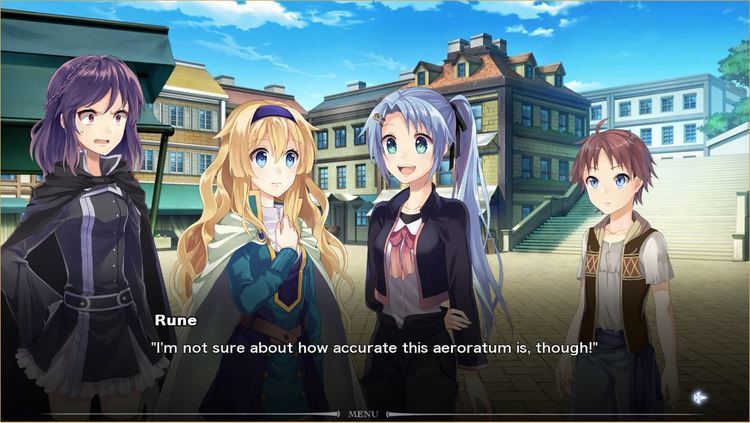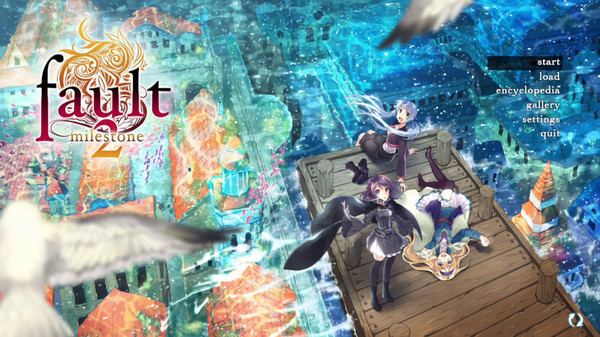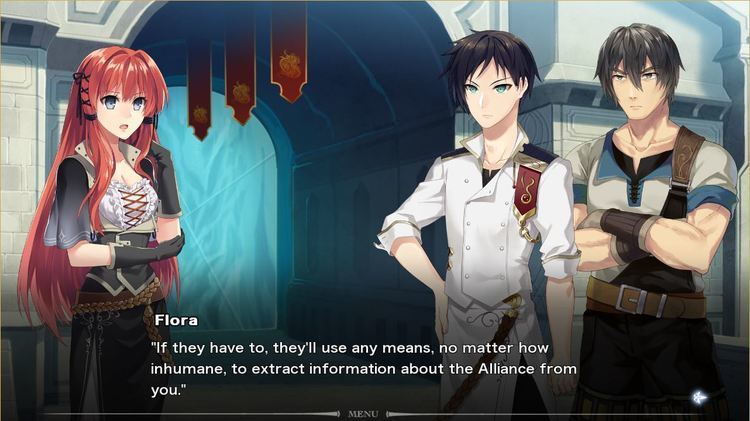Developer(s) Alice in Dissonance Artist(s) Hare Konatsu Initial release date 16 August 2015 Genre Visual novel | Director(s) Munisix Writer(s) Munisix Mode Single-player video game | |
 | ||
Release date(s) Side: AboveJP: August 16, 2015WW: September 8, 2015Side: BelowJP: 2017 Similar Sekai Project games, Visual novel games, Other games | ||
Fault milestone two side above 01 we all died let s play playthrough
Fault Milestone Two is a visual novel video game that is developed and published by Alice in Dissonance. It is split into two episodes: Side: Above, which was released in 2015, and Side: Below, which is planned to be released in 2017. It is the second entry in the Fault series, following Fault Milestone One (2013), and is set immediately after the events of the first game. The game features no player choices, and follows the characters of Selphine and Ritona, who are traveling home to the kingdom of Rughzenhaide together with their friend Rune.
Contents
- Fault milestone two side above 01 we all died let s play playthrough
- Fault milestone two side above melano op mana fission
- Structure characters and setting
- Development
- Release and localization
- Reception
- References

The game is written and directed by Munisix, with art direction by Hare Konatsu. It was originally intended to be released as a single game, but was split into two episodes due to its length and how the developers did not want to raise its price. The episodes are designed to fit around the prequel game Fault: Silence the Pedant, which is planned to be released between Side: Above and Side: Below. A reviewer at Hardcore Gamer liked the first episode's visuals and music, and found the story compelling, but also feeling like a detour. According to Munisix, the first episode was a commercial success.

Fault milestone two side above melano op mana fission
Structure, characters and setting

Fault Milestone Two is a linear visual novel without player choices. It is set in a world where magic exists, and takes place immediately after the events of its predecessor Fault Milestone One. It follows the characters of Selphine and Ritona, who have been transported far away following an attack on their homeland, the kingdom of Rughzenhaide; together with their newfound friend Rune, they are traveling back home.
Development

The game was developed by the doujin circle Alice in Dissonance as part of Project Written, the name of their operations. It was directed and written by Munisix, with art direction by Hare Konatsu. Munisix had previously intended to localize Fault Milestone One himself, but Sekai Project ended up doing the localization following a crowdfunding campaign in 2014; because of this, Munisix was able to focus on the development of Fault Milestone Two. While the game had originally been intended to be released at Comiket 87 in January 2015, it ended up being delayed; Alice in Dissonance said that the game was playable from start to finish, but that several sections of the game required improvements before the game could be released.

In July 2015, they announced that the game would be broken up into the two episodes Side: Above and Side: Below, as they thought the story had gotten too long to be sold for 15 USD, with Side: Above being roughly the same length as Fault Milestone One, and they wanted to avoid raising the price. Due to this split, they had to rein in some story elements; they said that this was a good thing, as those elements could otherwise have gone out of control. They considered giving Side: Below the title Milestone Three, but decided against it as they wanted each "milestone" to have its own consistent theme; for Fault Milestone Two, the theme is explored in different ways in each of the two episodes. The episodes were designed so that the prequel game Fault: Silence the Pedant, which is intended to be released between Side: Above and Side: Below, can fit between them. Like with Fault Milestone One, the developers wanted to include one player choice in Side: Above; they had one in mind, but eventually had to remove it as it broke the flow of the story. A new 3D camera system was added for the game, intended to make the experience more immersive and feel "larger than life".
Release and localization

Fault Milestone Two is being released in two episodes: Side: Above and Side: Below. The first episode was released for Microsoft Windows, OS X and Linux on August 16, 2015 in Japanese, and on September 8, 2015 in English; the second episode is planned to be released in 2017.
Work on the game's localization was announced to have begun in January 2015, when Sekai Project said that they had started the planning phase of the localization; later in the same month, they released a teaser trailer for it. A demo was released in April 2015; it was at first only made available for people who had backed Fault Milestone One's crowdfunding campaign on Kickstarter, and was later released to the public.
Reception
According to Munisix, Side: Above was a commercial success. It was reviewed by Marcus Estrada at Hardcore Gamer, who said that the plot was less dramatic than that of Fault Milestone One, but still managed to be compelling and giving insight into the characters of Ritona, Rune, Selphine and Rhegan; he did however think that it felt like a detour from the main plot, and that the episode's ending felt "truncated". He criticized it for being short, and said that the lack of player choices meant that there was little reason to replay it. He said that the game's visuals looked "gorgeous" and worked well with the story, and that the art style was above the more "standardized anime art" used in other visual novels from the same time. He also enjoyed the music, saying that the soundtrack was "full of standouts" that emphasized the story well; one criticism he had was that there wasn't more music for some scenes that only use ambient sounds.
